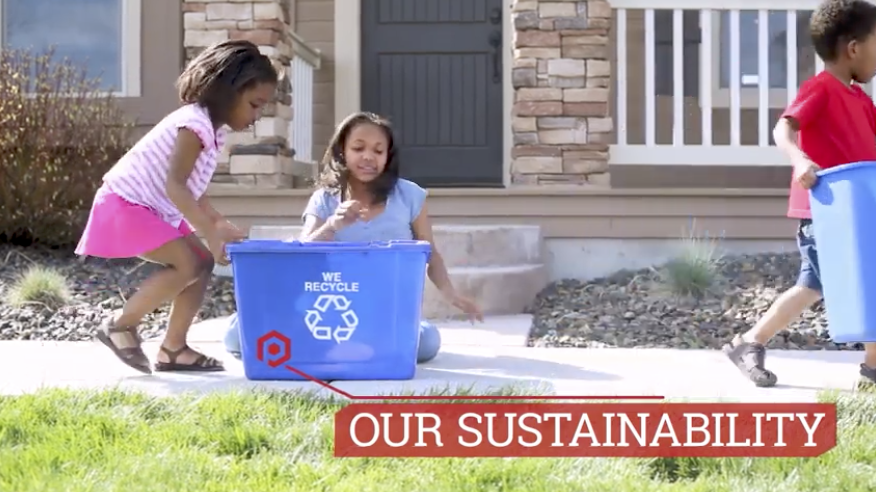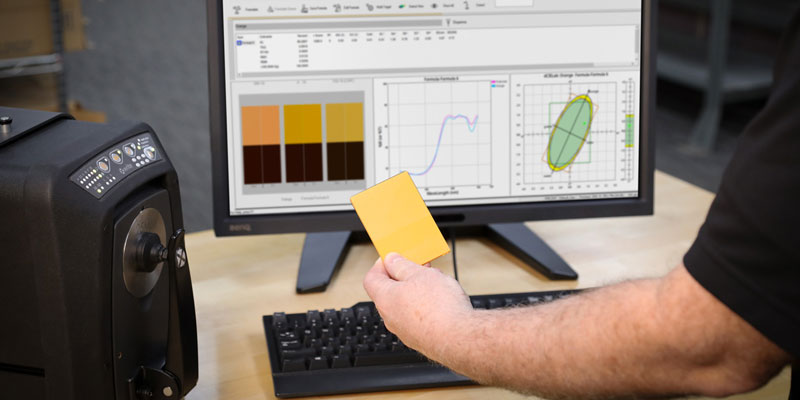As the industrial plastics market grows increasingly competitive and demands more sustainable practices, manufacturers need new ways to formulate and produce accurate color faster, with less waste. Digital color standards are one of the most effective tools to bridge this gap. They also enable color work and communication from remote locations.
With digital color standards, brands and designers can set clear expectations with supply chains. In turn, suppliers can achieve color goals with improved accuracy and less waste to reduce the impact of plastics manufacturing on our environment.
Digital color standards also bolster the Plastics Industry Association Sustainability Board’s message: “The Plastics Industry Association encourages all companies engaged in plastics manufacturing to make sustainability a guiding principle at all levels of operation. Sustainable plastic manufacturing conducts business in a way that seeks to drive value creation for society, the environment, and the industry. It also strives for improvement to reduce impacts on natural resources, minimizing waste generation, and shifting toward renewable energy options; all of which reduces greenhouse gas impacts.”

Image courtesy https://www.plasticsindustry.org.
Today we’ll explain what digital color standards are, how they integrate into a holistic and integrated plastics workflow, and the tools you need to get started.
What are Digital Color Standards for Plastics?
Digital standards are colors identified by a name and underlying data created by a spectral measurement, which quantifies a color’s identity based on the type of plastic, gloss or reflection level, special effect additives, lighting, and more. In effect, spectral data describes a color’s fingerprint to accurately communicate its unique identity. Digital standards are used as named colors during the design process and as spectral targets in a color management workflow, from design through pre-production, production, and quality control.
Digital standards don’t replace widely used physical standards; they augment them. Physical Pantone color guides and plastic chips are still important reference materials and the most trusted tool for designers when picking colors. But instead of giving each process step a new copy of a sample or physical reference to work with, digital standards offer real-time access to the original color data.
Using this spectral data from digital color standards, brand specifiers and manufacturers can minimize the time spent looking for the physical reference guides and eliminate errors that occur when physical standards become old, faded, dirty. or damaged. In turn, they help masterbatchers calculate and mix accurate color formulas and reduce waste and unnecessary time spent on iterations passed back and forth between design and production.
Incorporating Digital Color Standards into a Plastics Workflow
To use digital standards as a plastic masterbatcher or producer, you need:
- A spectrophotometer to measure spectral data from physical samples,
- Access to a spectral data repository (or a method to share digital color data),
- Formulation software to turn spectral data into color-accurate recipes, and
- Quality control software to track and evaluate the workflow.
Here’s how it works.
First, specify a digital color standard.
There are two ways to do this.
1. Reference a Pantone digital color standard from PantoneLIVE. PantoneLIVE Production for Plastic, Coatings and Textile is a cloud-based digital ecosystem that includes official spectral color values for plastic chips representing colors found in both the Pantone Fashion, Home + Interiors (FHI) color system as well as the Pantone Matching System (PMS) Formula Guide Solid Coated color system. These brand color palettes are standardized and consolidated into a set of digital color standards that everyone can utilize to ensure design intent is achieved, and color is produced quickly and accurately.

2. Create a custom brand digital color standard. Not all brand colors can be specified using Pantone standards. In these cases, brands can measure a physical standard with a highly accurate benchtop spectrophotometer like the Ci7000 series to create a custom digital color standard. Referencing the same custom brand and Pantone digital standards aligns everyone, no matter how many operators, sites or suppliers are involved, where they are located, or what they are producing.
Digital standards can be imported into a PantoneLIVE custom brand library. This eliminates the need to produce and distribute new physical standards or samples to suppliers because when a brand owner makes a change or addition to a brand color palette, everyone will see it in the library.
Digital standards can also be stored and sent as CxF files. Learn how to do this in our recent blog Tips to Remotely Share Color Data.
Second, formulate color-accurate masterbatch.
When it’s time to create a new color, formulators can access the spectral data for the approved color standard in PantoneLIVE, enter it into formulation software, and identify the best candidate formulas. This is also particularly useful when formulating and producing repeat colors as it can completely eliminate the need for a physical sample approval process.
Color iMatch formulation software uses spectral matching to automatically determine the best colorant combinations based on selected parameters so masterbatchers have control over formulation, productivity, and profitability. It offers recipes that use the colorants on hand and gives the option to include leftover materials to work off wasted material from past jobs.

Once the formulation is complete, the masterbatcher can create a sample plaque, measure it with a spectrophotometer to ensure it is within color tolerance, and send the digital color data to the customer for approval. Once approved, the formulation is ready to send to the extruder, eliminating the expense of travel and shipping samples back and forth for approval.
Download our Masterbatcher Application Brief to learn more.
Third, obtain feedback and monitor results.
Brands need a reliable way to verify their colors are produced consistently. X-Rite’s Color iQC software can retrieve digital standards from a PantoneLIVE database or import digital CxF files to communicate and analyze color requirements with near-real-time data for each and every production run. It presents results in an easy-to-understand dashboard for a more strategic and holistic approach to color management, saving time and money, reducing waste and rework, and speeding time to market.
Color iQC can also create audit trails and report on results over time, enabling brands to evaluate suppliers and ensure compliance. It also offers instant access to easily identifiable opportunities for quality improvement and reduces the need for costly and time-consuming manufacturing visits and approvals that are required for a physical sample and proofing process.
Make the Move to Digital Color Standards for Plastics
Adopting a digital color workflow can help brands and manufacturers streamline processes to reduce the carbon footprint of plastics manufacturing. PantoneLIVE integrates with X-Rite Ci7000 series spectrophotometers, Color iMatch formulation software, and the Color iQC quality control solution to create a holistic and integrated plastics workflow for seamless color management across the supply chain.
To speak with a Color Expert about your specific needs, get in touch.
